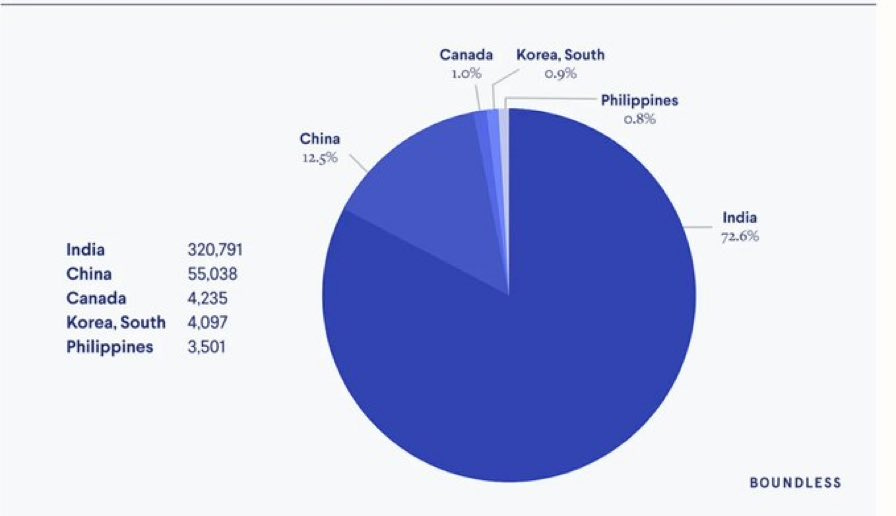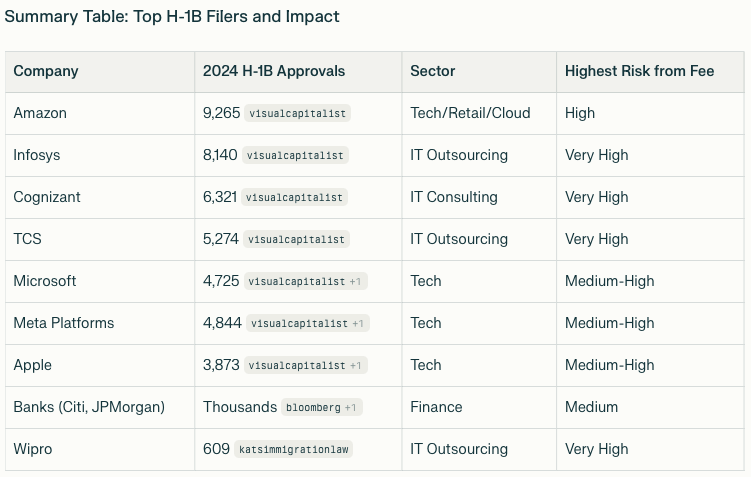Navigating the H-1B Visa Maze: Your Blueprint for Specialty Employment in the U.S.
Unlocking American Dreams: A Comprehensive Guide to Temporary Specialty Worker Visas and What to Expect in 2025
The U.S. H-1B visa serves as a crucial bridge, enabling American companies to temporarily bring in skilled foreign professionals for specialized roles. These sought-after positions typically demand a university degree or advanced qualifications in a particular discipline. As we look towards 2025, understanding the nuances of this program remains paramount for both prospective employees and sponsoring organizations.
This guide will demystify the H-1B visa process, offering a clear, step-by-step blueprint to help you navigate this competitive landscape. Whether you're an aspiring professional or a sponsoring employer, you'll find essential information to prepare for the upcoming year.
Breaking Down the H-1B Visa Mechanics
Let's break down the mechanics of the H-1B visa, covering everything from what constitutes a "specialty occupation" to the obligations of employers and the pathway for family members.
H-1B Visa Top Countries (Graphical Representation)
While we can't display a live infographic here, imagine a vibrant bar chart illustrating the following distribution of H-1B visa beneficiaries:
India: 72.6% - A dominant share, highlighting the strong presence of Indian professionals in U.S. specialty occupations.
China: 12.5% - Representing the second largest group contributing significantly to the U.S. workforce.
Canada: 1% - A smaller but consistent contributor of skilled labor.
S. Korea: 0.9% - Indicating a niche but valuable presence.
Philippines: 0.8% - Also contributing a notable number of professionals.
This visual emphasizes the diverse global talent pool the H-1B visa attracts.
1. Defining a Specialty Occupation
A specialty occupation isn't just any job; it's a role requiring advanced theoretical and practical knowledge, usually necessitating a bachelor's or higher degree (or its foreign equivalent) in a specific field. Think IT architects, aerospace engineers, research scientists, and even certain medical specialists. These are positions where specialized expertise is not just preferred, but absolutely essential. The U.S. Citizenship and Immigration Services (USCIS) provides detailed criteria to ensure that only genuinely specialized roles qualify, preventing the use of the H-1B for general labor positions.
2. Employee Suitability Criteria
For an individual to qualify, they must possess a university degree or an equivalent qualification directly relevant to the specialized role. If the profession demands a state license, that must be held without restrictions. Furthermore, substantial work experience can sometimes be considered equivalent to a bachelor's degree, demonstrating a wealth of practical expertise through progressive career advancement and recognition in the field. This offers flexibility for highly experienced individuals who may not have a traditional degree.
3. Employer Obligations
Companies wishing to sponsor an H-1B must first ensure the position genuinely falls under a specialty occupation. They are legally bound to compensate the H-1B worker at a rate no less than the prevailing wage for that occupation in the employment area, or the actual wage paid to similarly qualified local employees, whichever sum is greater. This protects both foreign and domestic workers. Before filing, the employer must submit a Labor Condition Application (LCA) to the U.S. Department of Labor, confirming adherence to these wage and working condition standards. This is a critical step that demonstrates the employer's commitment to fair labor practices.
4. The Annual H-1B Allocation: The Visa Lottery
The U.S. government sets an annual limit on H-1B visas. The general quota stands at 65,000 visas. An additional 20,000 visas are specifically allocated for individuals who have earned a master's degree or higher from a U.S. academic institution. Given the immense global interest, these allocations are frequently exhausted rapidly, often within the first few days of the application period. When demand surpasses availability, the U.S. Citizenship and Immigration Services (USCIS) conducts an electronic lottery to select eligible petitions. This lottery makes the H-1B a highly competitive visa, emphasizing the need for meticulous preparation.
5. The Electronic Selection Procedure
USCIS employs an electronic registration system for the H-1B cap. Sponsoring employers must register online for each potential H-1B candidate they intend to support during a specific registration window. Only those registrations selected in this lottery are then permitted to submit a full H-1B petition. This system streamlines the initial application phase significantly, reducing the burden of filing full petitions for unselected candidates and making the process more efficient for all parties involved.
6. Authorized Period of Stay: Beyond the Initial Six Years
Initially, an H-1B visa grants permission for up to three years of employment, with a potential extension up to a cumulative total of six years. In specific scenarios, such as when an H-1B holder has initiated the process for lawful permanent residency (Green Card) through an approved I-140 petition or if an I-140 petition has been pending for 365 days or more, further extensions beyond the six-year limit may be possible, preventing a disruption in their status while awaiting Green Card approval. While there aren't "upgraded" versions of the H-1B itself, these provisions offer a crucial pathway for longer-term residency, effectively extending the benefits of the H-1B for those on a Green Card journey.
7. "Dual Intent" Provisions: A Path to Permanent Residency
A key advantage of the H-1B visa is its "dual intent" nature. This means that an H-1B holder can simultaneously pursue permanent residency in the U.S. without their H-1B non-immigrant status being jeopardized. Unlike some other non-immigrant visas, the H-1B acknowledges that individuals may intend to eventually become permanent residents. This provision offers significant peace of mind and a clear path for those aspiring to long-term settlement, allowing them to work and live in the U.S. while their Green Card application progresses.
8. Family Benefits: The H-4 Visa and Work Authorization
Immediate family members—spouses and unmarried children under 21—of H-1B visa holders can apply for an H-4 dependent visa. Notably, under specific conditions, certain H-4 visa holders may also be eligible to apply for an Employment Authorization Document (EAD), granting them permission to work in the U.S. This significantly enhances the flexibility and opportunities for H-1B families, allowing spouses to pursue their own careers and contribute to the household income, making the U.S. a more attractive destination for skilled professionals and their families.
9. The Application Journey: A Step-by-Step Guide
The process begins with the employer filing the Labor Condition Application (LCA) with the U.S. Department of Labor. Next, for cap-subject cases, the employer registers for the H-1B lottery during the designated registration period. If selected, the employer proceeds to file Form I-129, Petition for a Nonimmigrant Worker, with USCIS, providing detailed documentation about the position and the beneficiary. Upon approval, the H-1B worker can commence their specialized role. For individuals outside the U.S., the final step involves attending an interview at a U.S. embassy or consulate to receive the H-1B visa stamp in their passport. This structured journey requires careful attention to detail at each stage.
10. Associated Expenses: Understanding the Costs
The H-1B process involves various expenses, encompassing USCIS filing fees (which can vary based on company size and specific circumstances), legal representation costs (for drafting petitions and ensuring compliance), and sometimes premium processing fees for faster review of the petition. It is generally the responsibility of the sponsoring employer to cover these costs, making it an investment in securing specialized talent. Prospective employees should clarify these details with their sponsoring company.
The H-1B visa, while complex, remains a vital channel for global talent to contribute to the American economy. With its lottery system and dual intent provisions, it offers a structured, albeit competitive, pathway for professionals seeking to advance their careers in the United States. For more detailed insights, you can visit The Transcendent.
Conclusion: Your Golden Ticket to American Opportunity
Navigating the H-1B visa landscape can feel like a high-stakes game of professional bingo, especially with that annual lottery. But remember, the U.S. isn't just looking for talent; it's looking for specialty talent. So, if your skills are sharper than a tack and your degree is on point, consider the H-1B your golden ticket. Just don't forget your lucky socks for the lottery – because even the most brilliant minds sometimes need a little extra nudge from fate! With diligent preparation and understanding of the process, your American dream could be well within reach.
Summary: H-1B Visa Key Steps and Information
Step / HeadlineDescription or StatisticDefining a Specialty OccupationRequires advanced theoretical & practical knowledge; typically bachelor's or higher degree in a specific field.Employee Suitability CriteriaUniversity degree or equivalent relevant qualification; state license if required; substantial work experience can substitute for degree.Employer ObligationsEnsure specialty occupation, pay prevailing/actual wage (whichever is higher), submit Labor Condition Application (LCA).Annual H-1B Allocation65,000 regular visas + 20,000 for U.S. master's degrees; often oversubscribed, leading to lottery.Electronic Selection ProcedureEmployers register online for candidates; only selected registrations proceed to full petition filing.Authorized Period of StayInitial 3 years, extendable to 6 years total; further extensions possible if Green Card application is pending."Dual Intent" ProvisionsH-1B holders can pursue U.S. permanent residency without jeopardizing their non-immigrant status.Family Benefits: H-4 VisaSpouses and unmarried children under 21 qualify for H-4 visa; some H-4 holders eligible for work authorization (EAD).The Application JourneyLCA filing → H-1B lottery registration (if cap-subject) → Form I-129 filing → Approval → Visa stamping (for those outside U.S.).Associated ExpensesUSCIS filing fees, legal costs, premium processing fees (employer's responsibility).
Frequently Asked Questions (FAQs)
Q1: What is the main purpose of the H-1B visa?
A1: The H-1B visa permits U.S. employers to temporarily hire foreign professionals in specialty occupations requiring a bachelor's degree or higher.
Q2: Is there a limit to how many H-1B visas are issued each year?
A2: Yes, there's an annual cap of 65,000 regular visas and an additional 20,000 for those with a U.S. master's degree or higher. This cap is often reached quickly, necessitating a lottery system.
Q3: Can H-1B visa holders pursue a Green Card?
A3: Yes, the H-1B is a "dual intent" visa, allowing holders to simultaneously seek lawful permanent residency without affecting their H-1B status. This is a significant benefit for those planning long-term stay.
Q4: What is the maximum duration one can stay on an H-1B visa?
A4: Typically, an H-1B visa is granted for up to three years, extendable to a total of six years. However, potential extensions beyond that are possible if a Green Card application (specifically, an I-140 petition) is pending.
Q5: Are family members of H-1B holders eligible to come to the U.S.?
A5: Yes, spouses and unmarried children under 21 can apply for an H-4 dependent visa. Under specific conditions, some H-4 holders may even qualify for an Employment Authorization Document (EAD), allowing them to work in the U.S.
Ready to explore your options for specialty employment in the U.S.?



Comments
Post a Comment